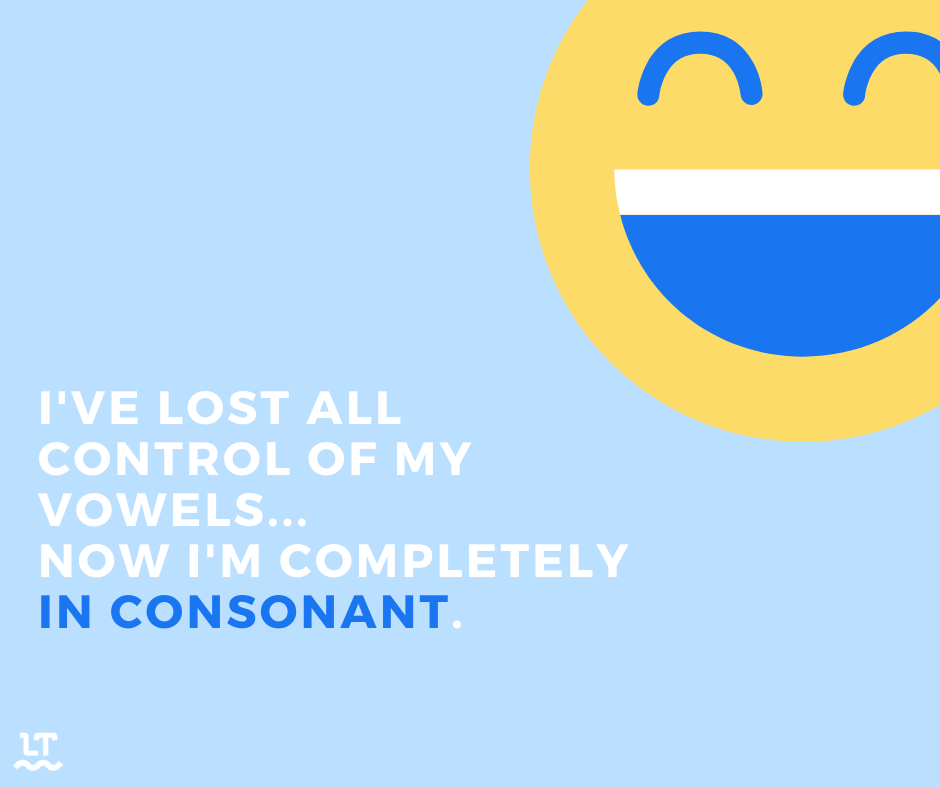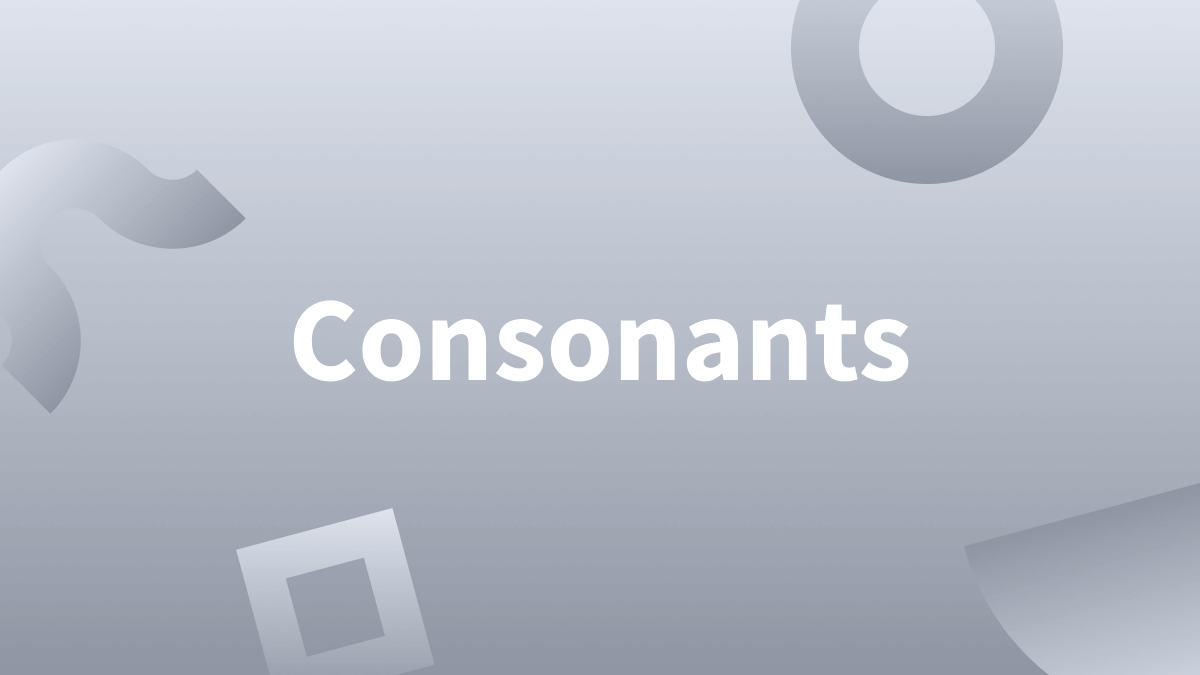What Are the Consonants?
- There are 21 consonants in the English alphabet: B, C, D, F, G, H, J, K, L, M, N, P, Q, R, S, T, V, W, X, Y, Z.
- Keep in mind that “Y” can sometimes function as a vowel (which is known as a semivowel).
What Is a Consonant?
A consonant is a letter that represents speech sounds that can only be made when the vocal tract is partially or entirely closed. Consonants require specific positions of the lips, tongue, and cheeks.
While the pronunciation of vowels varies vastly across different English speakers and dialects, the pronunciation of consonants is more defined (although some dialectal variation exists).
Below, we’ll dive deeper into what consonants are by reviewing each one and the sound(s) they make, going over what consonant digraphs are, and explaining the difference between consonants and consonance.
Sounds of Consonants (With Examples)
There are 21 consonants in the English alphabet—B, C, D, F, G, H, J, K, L, M, N, P, Q, R, S, T, V, W, X, Y, Z.

It’s important to remember that certain consonant combinations can create different sounds altogether. These combinations are known as consonant digraphs, trigraphs, or tetragraphs (depending on how many letters there are). Consonant digraphs are the most common, and there are numerous examples. A few are “DG” creating the /dʒ/ sound in badge, “GH” creating the /f/ sound in cough, and “SH” creating the /ഽ/ sound in shadow.
What Is a Silent Letter?
A silent letter is a letter that doesn’t represent any sound when the word is pronounced aloud. In English, every letter can be silent in at least one word. For some consonants, it’s not unusual to see them acting as silent letters, like B, C, D, G, H, K, L, M, N, P, T, and W. These letters are silent in the following examples: doubt, muscle, Wednesday, gnaw, hour, know, salmon, mnemonic, autumn, raspberry, castle, and answer.
Consonants vs. Consonance
Although related, be careful not to confuse consonants with consonance.
Consonance is a literary and poetic device in which the same consonant sound (anywhere in a word) is repeated in several nearby words.
The zoo was amazing.
In the example above, the /z/ sound is found at the beginning of “zoo” and towards the end of “amazing.”
Alliteration is a subcategory of consonance. The only difference is that the repeated consonant sounds are found at the beginning of words.
Crazy cats create chaos.

Why Learning About Consonants Is Important
Being able to identify consonants is important because it’ll help you get better at spelling and pronouncing words.
Of course, the best way to learn the sound(s) each consonant represents takes practice and familiarization. If you are in the process of learning about consonants, LanguageTool can ensure your writing is free from spelling mistakes and typos. Additionally, this advanced writing assistant can also detect errors in punctuation and grammar. So, no matter where you are on your writing journey, LanguageTool can help you produce exceptional texts.

